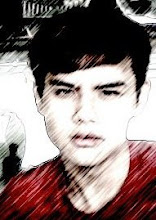
Every person life cannot without music, especially me. Music is always around man, since ancient times such as China history they are using bamboo, different kind of wood, copper, animal skins and so on to create the musical instruments. China which had more than 13 million of people and more than fifty-six kinds of races as well, it is a huge country. Thus, due to those reasons they created a lots of difference kinds of musical instruments, every each instruments have it own characteristic and it might significance their culture as well.
Chinese musical instruments can be separated as “wind instruments”, “bowed string instruments”, “plucked string instruments” and “percussion instruments” four types. Wind instruments
Sheng

Sheng was came into use during the Yin Dynasty, the later period of the Shang Dynasty. A free brass reed is placed in the root of the instrument. It in soprano, alto, and tenor models, they have a great clearness of tone, and compensate for the lack of brass in tutti orchestration.
Bawu

Bawu, it look alike Di, with 8 holes in general, can produce 8 to 11 tones. Having been remade, it can produce two octaves and usually used by the Yi, Dai (Tai), Miao and Han nationalities distributed area of Yunnan. It sound is soft, apparent to be with nasal sound.
Di

It is the traditional Chinese flute. It’s the only one Chinese instrument just can played three keys, most players carry a chromatic set. It can have a membrane over an extra tone hole to give the characteristic rattle effect, although some compositions call for this to be omitted.
Suona

It has a nasal penetrating sound and comes in various sizes. When traditional Chinese wedding they will played it in front.
Bowed string instruments
Erhu

Er Hu, also known as Hu Chin, or Nan Hu, well-liked In the Tang Dynasty and Song Dynasty as well, is one of the most popular musical instruments played in the orchestra. Erhu has a small body and with a long neck. There are two strings, with the bow placed in between them. With a range of around three octaves, it sound quite same like the violin, but with a thinner tone due to the smaller resonating hall.
Gehu

It is a mixture of the cello and hu, it resonation covered with a single casing of boa skin, a bridge, a neck and four strings. Gehu sound is eloquent and resilient, but it is not alike cello.
Plucked string instruments
Pipa

It quite look alike the Spanish guitar, with long finger-nails being refined to pluck the strings. With its characteristic pear shape and four gut strings, many techniques and uses have developed, to the point where it may be considered a characteristic of Chinese music.
Liu Qin

Liu Qing is looks like a smaller version of the pipa and sounds like a mandolin.
Yang Qin

Yang qin is played with a pair of bamboo mallets. The metallic tone resembles the harpsichord, and the concert model has four octaves. It’s sound quite a like piano.
Ruan
.jpg)
Also known as the moon guitar, it comes in a variety of different sizes and pitches, and is fitted with four strings.
Percussion instruments
Like many other oriental musical ensembles, the classic Chinese orchestra uses a wide variety of percussion. Some examples are the Paigu, which is a set of seven, small, tuned drums, together with drums of all pitches and sizes. Used are the yunlo, quings, and the jingluo, a small gong used in Beijing opera. This last is recognizable for its characteristic rising tone. Also used are cymbals, gongs, bells and hand bells, wooden bells and hand clappers, claves and temple blocks.





No comments:
Post a Comment